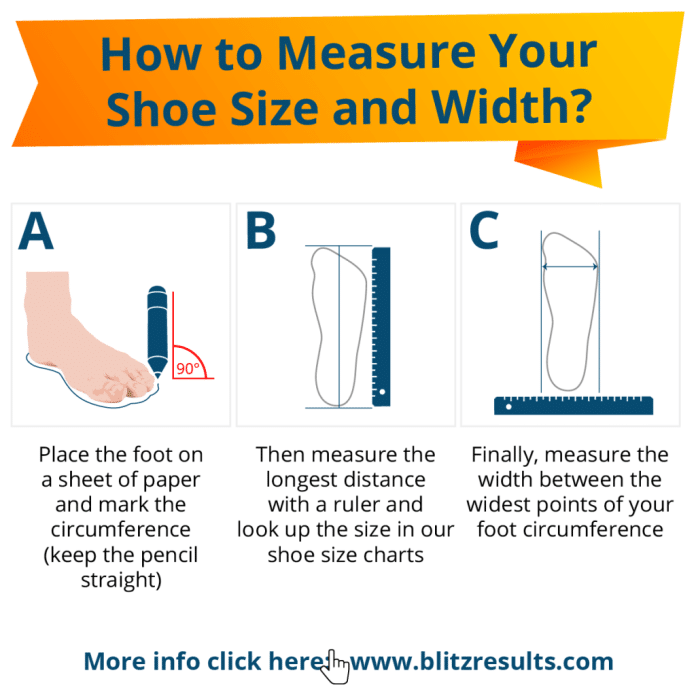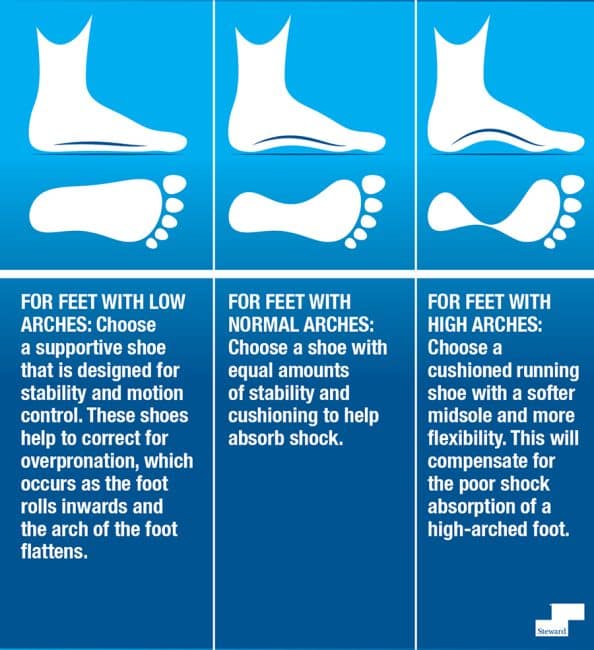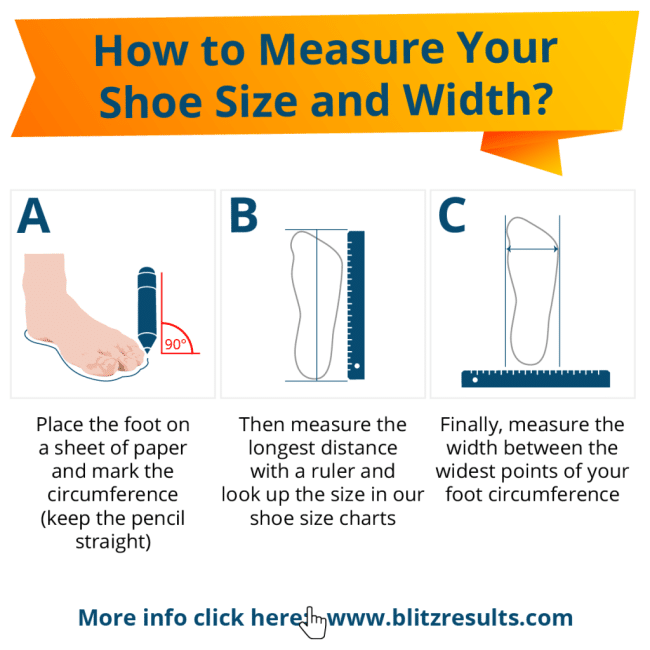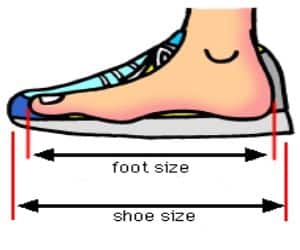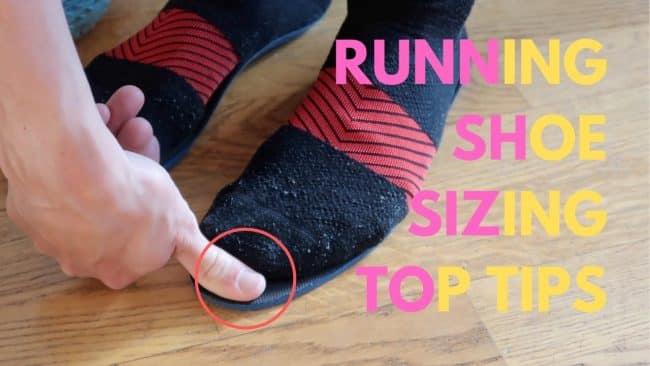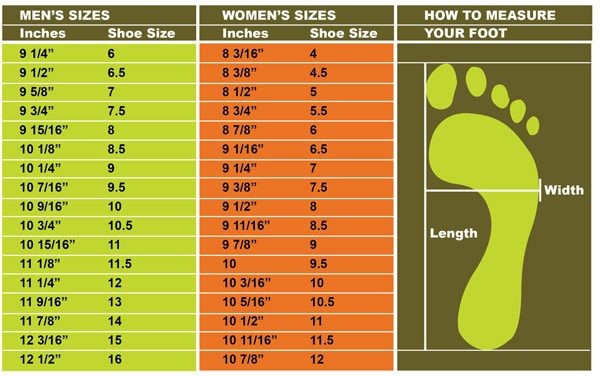With so many options available, selecting the perfect running shoe size can be a daunting task. But fear not, for we are here to guide you through the process of choosing the right fit for your feet. Whether you’re a seasoned runner or just starting your fitness journey, finding the correct shoe size is crucial for preventing discomfort and potential injuries. In this article, we will uncover some essential tips and tricks to help you on your quest for the ideal running shoe size. So let’s lace up and get started!
Review contents
Understanding the Importance of the Right Running Shoe Size
Finding the perfect running shoe size is crucial for a comfortable and enjoyable running experience. Wearing ill-fitting shoes can lead to a range of issues such as blisters, foot pain, and even injuries. To ensure a proper fit, it is essential to measure your feet accurately and consider factors such as foot type, arch type, width, and toe length. In this comprehensive guide, we will break down the steps to measure your feet, determine your running shoe size, accommodate for different foot shapes, understand sizing discrepancies between brands, consider the perfect fit, seek expert advice, avoid common mistakes, and know when it’s time to replace your running shoes.
1. Measuring Your Feet
1.1 Determining Your Foot Type
Before measuring your feet, it’s important to understand your foot type. There are three general foot types: neutral, flat, and high-arched. To determine your foot type, you can perform a simple wet test. Wet your feet and step on a piece of paper or cardboard. Based on the shape of the wet footprint left behind, you can identify whether you have a neutral, flat, or high-arched foot.
1.2 Measuring Your Feet with a Brannock Device
One of the most accurate ways to measure your feet is by using a Brannock Device. This device is commonly found in shoe stores and measures the length, width, and arch length of your feet. By following the instructions on the device, you can get precise measurements that will guide you in choosing the right running shoe size.
1.3 Measuring Your Feet at Home
If you don’t have access to a Brannock Device, you can measure your feet at home with a measuring tape or ruler. Sit down and place one foot flat on a piece of paper. Trace the outline of your foot and measure the distance from the heel to the longest toe. Repeat the process for the other foot, as one foot may be slightly larger than the other. Use the larger measurement for sizing purposes.
This image is property of www.stewardtoday.com.
2. How to Determine Your Running Shoe Size
2.1 Using the Brannock Device
If you have access to a Brannock Device, determining your running shoe size becomes relatively straightforward. Simply follow the instructions on the device to measure the length and width of your feet. Take note of the measurements provided on the device and consult a shoe size chart to find the corresponding running shoe size.
2.2 Using an Online Shoe Size Calculator
If you prefer the convenience of online tools, you can use a shoe size calculator. These calculators typically require measurements of your feet, such as length and width. Input the measurements into the calculator, and it will provide you with a recommended shoe size. Keep in mind that different brands may have slight variations in size, so it’s always a good idea to check the brand’s specific size chart.
2.3 Trying on Multiple Sizes and Brands
While measurements and calculators can provide a starting point, it’s important to remember that sizing can vary across different shoe brands and models. To ensure the best fit, it’s recommended to try on multiple sizes and brands. Go to a reputable shoe store and try on a few different options. Walk around, jog in place, and pay attention to how the shoes feel. Comfort is key, so choose the size and brand that feels the most supportive and comfortable for your feet.
3. Considerations for Different Foot Shapes
3.1 Understanding the Arch Type
Apart from foot length and width, the arch type of your feet plays a crucial role in finding the right running shoe size. There are three main arch types: high, medium, and low. Determine your arch type by observing your wet footprints or consulting a podiatrist. Once you know your arch type, look for running shoes with proper arch support that matches your needs.
3.2 Assessing the Width of Your Feet
Foot width is another essential factor to consider. Some individuals have narrow feet, while others have wider feet. It’s important to choose a running shoe that offers the appropriate width for your feet. Shoes that are too narrow can cause discomfort and may lead to issues like bunions or corns. On the other hand, shoes that are too wide can cause rubbing and blisters. Be sure to try on shoes with different width options to find the best fit.
3.3 Accommodating for Toe Length
The length of your toes also plays a role in determining the right running shoe size. Some individuals have longer toes or a second toe that is longer than the big toe. When trying on shoes, make sure there is enough toe room to prevent any discomfort or pressure on the toes. Ideally, there should be about a half-inch of space between the end of your longest toe and the front of the shoe.
This image is property of talkultra.files.wordpress.com.
4. Understanding Sizing Discrepancies between Brands
It’s important to note that sizing can vary significantly between different shoe brands. One brand’s size 8 may fit differently than another brand’s size 8. To ensure a proper fit, always refer to the specific brand’s size chart and consider trying on different sizes within the same brand. Additionally, it can be helpful to read online reviews or seek advice from experienced runners who have worn shoes from the brand you are considering.
5. Factors to Consider for the Perfect Fit
5.1 Allowance for Toe Wiggle Room
When choosing a running shoe size, it’s crucial to have enough room for your toes to wiggle comfortably. A tight or cramped toe box can lead to blisters, black toenails, and general discomfort during your runs. Ensure that there is a thumb’s width of space between the end of your toe and the front of the shoe.
5.2 Width and Length of the Shoe
Both the width and length of the shoe are important considerations for a perfect fit. If a shoe is too narrow, it can cause pressure points and discomfort. Conversely, if a shoe is too wide, it may lack stability and support. Choose a shoe with the appropriate width and length to accommodate the natural shape of your feet.
5.3 Evaluating the Heel Fit
The fit around the heel is crucial for stability and preventing slippage. A properly fitting running shoe should securely hold your heel in place without any rubbing or friction. If there is too much space, your foot may slide around inside the shoe, leading to blisters or a loss of stability. If the shoe feels too snug or tight around the heel, it may cause discomfort or potential injuries. Aim for a snug yet comfortable fit around the heel area.
5.4 Considering Insoles or Orthotics
Orthotics or shoe inserts can be beneficial if you have specific foot conditions or require additional arch support. If you use orthotics, it’s important to account for their thickness when choosing a running shoe size. Make sure there is enough space in the shoe to accommodate the inserts without compromising the overall fit and comfort.
5.5 Testing for Flexibility and Responsiveness
Finally, when trying on running shoes, it’s essential to assess their flexibility and responsiveness. The shoe should allow for natural foot movement and should have some degree of flexibility in the sole. Bend the shoe gently to gauge its flexibility, and try walking or running in them to feel how responsive they are to your strides. A good running shoe should promote a smooth and efficient gait.
This image is property of content.instructables.com.
6. The Importance of Trying on and Testing the Fit
While measurements and calculations can provide a rough approximation of your running shoe size, there is no substitute for trying on and testing the shoes yourself. Everyone’s feet are unique, and what works for one person may not work for another. By trying on different sizes and brands, you can get a better sense of how the shoes feel and perform. Take the time to walk or run around in the shoes to assess their comfort, fit, and responsiveness before making a final decision.
7. Seeking Expert Advice
If you’re unsure about measuring your feet or finding the right running shoe size, it’s always helpful to seek expert advice. Visit a specialty running shoe store where trained professionals can provide a thorough foot analysis and guide you in selecting the most suitable shoes. They can offer insight into your foot type, arch type, and any specific concerns you may have, ensuring you make an informed choice.
This image is property of i.ytimg.com.
8. Common Mistakes to Avoid
8.1 Ignoring Your Foot Type and Shape
One of the most common mistakes when choosing a running shoe size is ignoring your foot type and shape. Each foot is unique, and understanding your specific needs is crucial to finding the perfect fit. Consider your foot’s arch type, width, and length when selecting a running shoe to support your feet properly.
8.2 Neglecting to Measure Both Feet
It’s important to measure both feet individually, as most people have one foot slightly larger than the other. Using the larger measurement ensures that both feet are comfortable and supported in the chosen shoe size. Neglecting to measure both feet can result in discomfort and potential foot problems.
8.3 Not Trying on Shoes with the Right Socks
When trying on running shoes, it’s essential to wear the right socks that you would typically use for running. The thickness and material of the socks can affect the overall fit and comfort of the shoe. Neglecting to wear the proper socks during fitting may lead to a wrong size selection and an uncomfortable running experience.
8.4 Focusing Solely on Numbers
While knowing your shoe size is important, it’s equally crucial to prioritize comfort and fit over the numbers. Different shoe models and brands may have slight variations in sizing. Pay more attention to how the shoe feels on your feet rather than getting fixated on the numerical size. At the end of the day, the right fit is determined by how comfortable and supportive the shoe feels, not just the number on the tag.
8.5 Overlooking the Importance of Comfort and Feel
When choosing the right running shoe size, comfort and feel should always be the top priority. A shoe that fits snugly and supports your feet properly will greatly enhance your running experience. Don’t compromise on comfort for the sake of fashion or aesthetic appeal. Prioritize finding a shoe that feels great on your feet and allows you to perform at your best.
10. When to Replace Your Running Shoes
After finding the perfect running shoe size, it’s important to know when it’s time to replace your shoes. As running shoes experience wear and tear, their performance and cushioning ability may deteriorate over time. Here are some signs that indicate it’s time for a new pair of running shoes:
10.1 Evaluating the Tread Wear
Check the soles of your running shoes for signs of wear. If the tread patterns have worn down or are significantly smoother, it may indicate a loss of traction. A lack of grip can increase the risk of slips and falls during your runs, so it’s crucial to replace the shoes before they become a safety concern.
10.2 Recognizing the Loss of Cushioning
Running shoes provide cushioning and shock absorption to protect your feet and joints. When the midsole foam of the shoes compresses and loses its ability to provide adequate cushioning, it’s time to replace them. A lack of cushioning can lead to discomfort, foot fatigue, and increased stress on your joints.
10.3 Considering Mileage and Frequency of Use
The mileage and frequency of use are important factors to consider when determining when to replace your running shoes. On average, most running shoes last between 300 to 500 miles, depending on the type of shoe, your running style, and the surfaces you run on. If you’re a frequent runner or have been using your shoes extensively, it’s essential to keep track of the mileage and replace them accordingly.
In conclusion, choosing the right running shoe size is essential for a comfortable and enjoyable running experience. By measuring your feet accurately, considering factors like foot type, arch type, width, and toe length, accommodating for different foot shapes, understanding sizing discrepancies between brands, evaluating the perfect fit, seeking expert advice, avoiding common mistakes, and knowing when to replace your running shoes, you can ensure that you have the perfect fit for your feet. Remember, a well-fitting shoe can make all the difference in preventing discomfort, injuries, and maximizing your running performance. So take the time to find the right running shoe size and enjoy your runs to the fullest!
This image is property of talkultra.files.wordpress.com.

